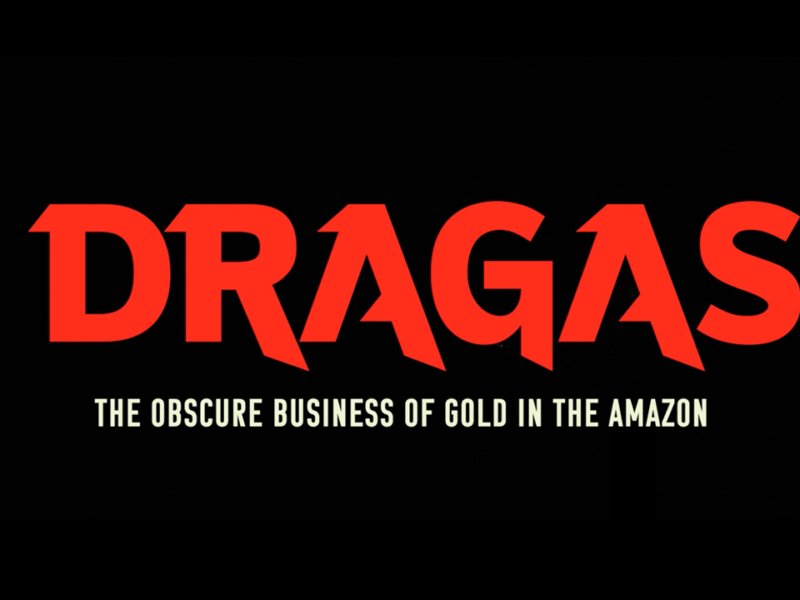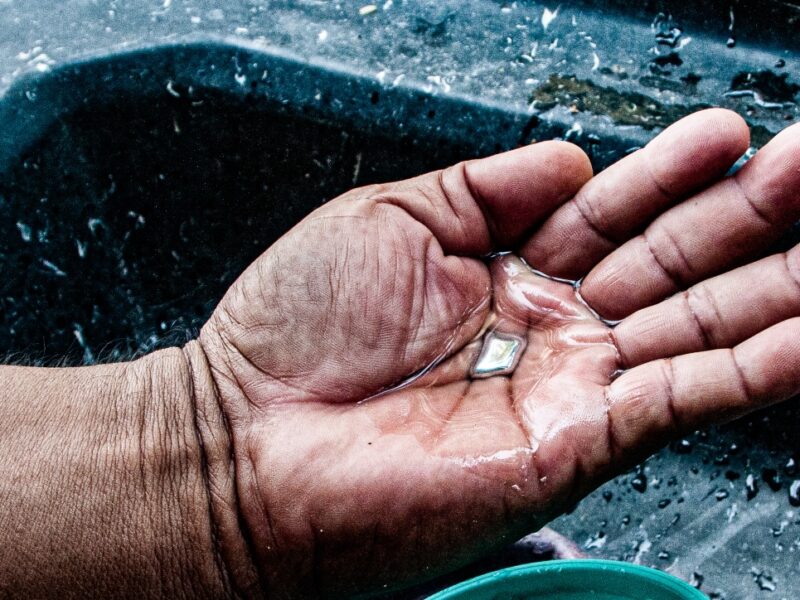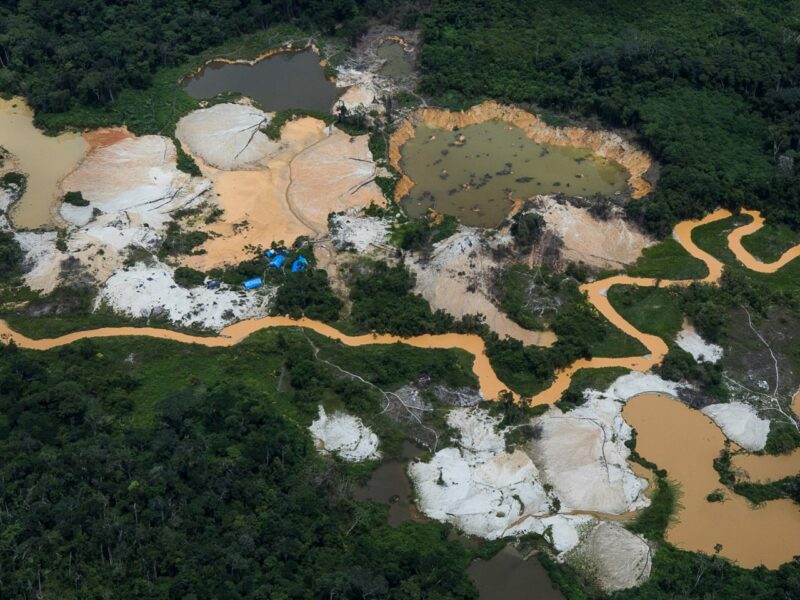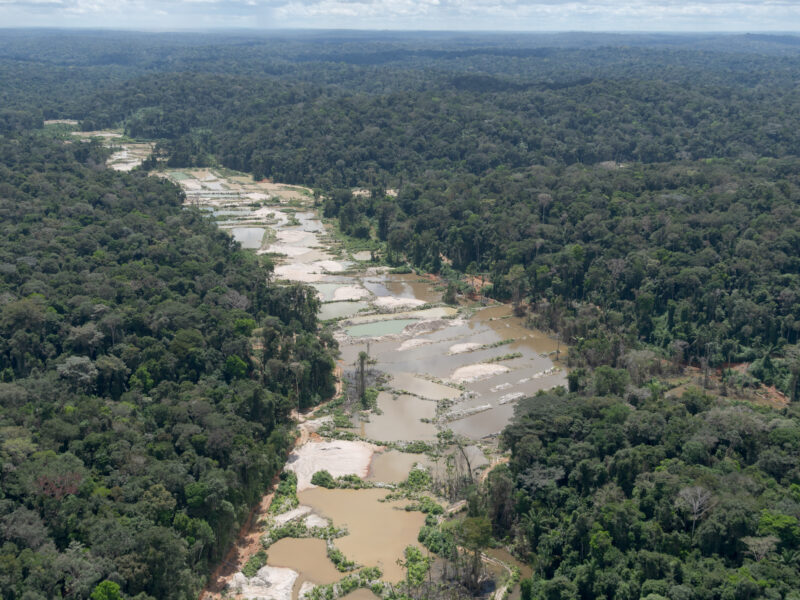The film ‘Dragas: The Obscure Business of Gold in the Amazon’ incorporates a 1-year and 4-month investigation that maps the operations of armed groups and criminal factions exploiting illicit economies in the forest, revealing their locations and modus operandi.
Tag: garimpo
Illegal gold miners remove equipment and escape crackdown in Amazonas
Satellite images show that the interruption of gold mining immediately changed the color of the river. Operators of dredges, which can cost up to US$1.4 million, said they planned to return to the area after the government anti-mining operation ended.
From Bolivia to the Tapajós: mercury trafficking for wildcat mining operations on Munduruku Indigenous Territories
InfoAmazonia visited location where illegal mercury is sold along the border between Bolivia and Brazil, for illegal use by wildcat gold mining operations in Amazonia. After the Minamata Convention, Bolivia became the world’s largest mercury importer and it is estimated that half of the metal is sold as contraband to neighboring countries including Brazil, which has eliminated its legal mercury imports.
From mining to fish: how mercury contaminates the Munduruku Indigenous community
Carnivorous fish are among the most consumed by the Munduruku and the most contaminated by mercury. Scientists suspect the toxic metal, found in the bodies of the members of this indigenous community is seriously affecting the health of adults and children who are born with malformations and developmental delays. Munduruku women already avoid getting pregnant.
Gold, not potassium: the real interest of mining on indigenous lands
Forty three percent of all mining requests on the indigenous lands in the Brazilian Amazon lands are for gold extraction, an InfoAmazonia data analysis reveals. In several of these targeted areas, satellite images show that there is gold mining already taking place without authorization.
New study suggests that mercury contamination is widespread among residents of the Amazon
Although living 186 miles away from the area along the Tapajós River where illegal mining is concentrated, Santarém’s inhabitants are at high risk of mercury poisoning.
Every person in three indigenous Munduruku villages in Pará is contaminated by mercury from wildcat mining
Studies by Fiocruz show that 60% of the indigenous people of the Sawré Muybu Indigenous Land have this toxic metal in their bodies above the limit tolerated by the WHO. Mining in indigenous lands has grown by almost 500% in a decade.








